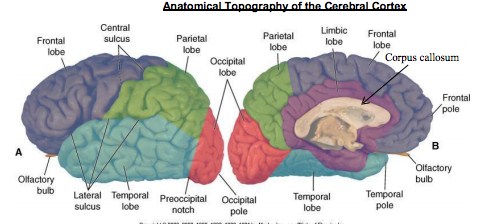
- Central: Part situated in the central axis of the body, known as Central Nervous System. These are Brain and Spinal cord. Brain is the proximal expanded part situated inside the cranial cavity.
Distal, narrow, tubular and elongated part is the spinal cord which is lodged in the upper two-third of the vertebral canal. Grossly brain is divided into three parts–Forebrain, Midbrain and Hindbrain.
Spinal cord is divided into 31 segments, which are classified regionally as Cervical-8, Thoracic-12, Lumbar-5,Sacral-5 and Coccygeal-1. - Peripheral: This is known as Peripheral Nervous System. This is peripheral outflow or peripheral extensions from Central Nervous System in the form of peripheral nerves. The peripheral nerves are divided into two groups as:
- Proximal (Cranial): Cranial nerves, 12 pairs arising as outflow from brain.
- Distal (Caudal): Spinal nerves, 31 pairs, each pair arising from each segment of spinal cord.
Central Nervous System may be compared as the Director of an office, and Peripheral Nervous System as the Field Staff. Like the Director, Central Nervous System gathers information from and gives direction to the Peripheral Nervous System, whose duty is to convey information and also to carry out the order from its Director, i.e. Central Nervous System, for action.Fundamental difference between the Cranial and Spinal nerves:
All the spinal nerves contain sensory (incoming) fibers carrying impulse (information) towards the central nervous system and motor fibers (outgoing) carrying impulse (directions) away from the central nervous system to the effector organ, that is why all the spinal nerves are mixed nerves. But some cranial nerves are mixed like spinal nerves and some are either purely motor or purely sensory.
Source: Easy and Interesting Approach to Human Neuroanatomy (Clinically Oriented) (2014)